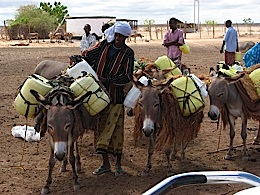 The overall context is the alarming decline in the growth of farm output in Kenya over the last fifteen or more years. From the late 1980s the growth of agricultural production has stagnated and fallen behind population growth. Production per head of population is now slightly below what it was at Independence in 1964.
The overall context is the alarming decline in the growth of farm output in Kenya over the last fifteen or more years. From the late 1980s the growth of agricultural production has stagnated and fallen behind population growth. Production per head of population is now slightly below what it was at Independence in 1964.
The modern Kenyan economy has been built on agriculture, starting with the development of large-scale commercial farms owned by white settlers in the first half of the 20th Century.
Following the Swynnerton Plan of 1954, a drive to develop the smaller holdings operated by African farmers began. For almost thirty years thereafter, before and after Independence in 1964, smallholder development in the higher potential parts of Kenya was successful – sufficient to drive agricultural growth ahead of the country’s rapid population expansion. Smallholders increased notably their output of coffee, tea, pyrethrum, and cotton for export and produced large amounts of maize, beans, sugar, beef, and dairy for the domestic market.
Government played an active role, organising marketing boards or co-operatives for the major sectors with responsibilities for input supply and marketing; and funding research and extension. Titling of smallholdings began early in Kenya, from 1954 onwards.
But from the early 1980s onwards the model began to fail. Agricultural growth rates fell in the 1980s, and dropped still further in the 1990s, by which time the growth of farm output was lagging behind that of population. Increasingly staple foods had to be imported to make for shortfalls in domestic production. During this time, the few bright points seem to have been limited to horticulture a floriculture for export, and dairy production mainly for national consumption. {jathumbnail off}
